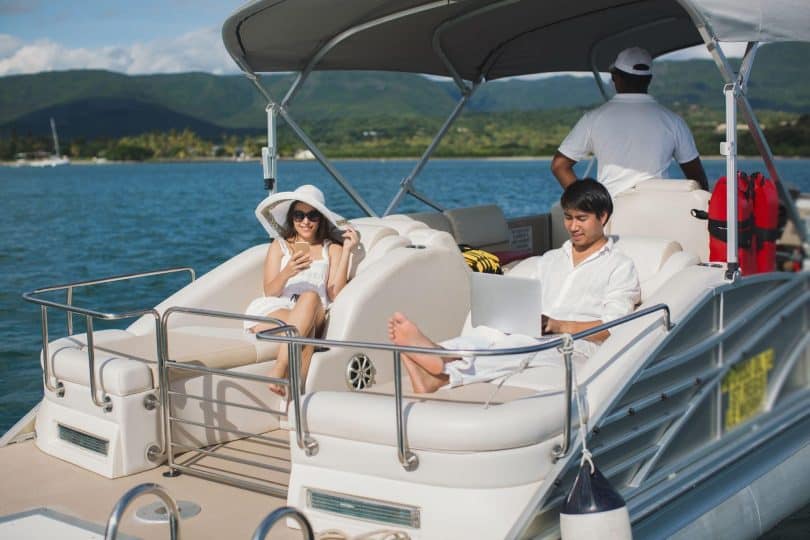Are you in the market for a boat but overwhelmed by the numerous options available? Well, look no further! In this article, Eugene Preyl will serve as a complete buyer’s guide to assist you in making the proper selection. With so many kinds and features of boats, it’s vital to understand the aspects to consider to find the ideal fit for your requirements and budget.
Contents
What to Consider Before Buying a Boat?
Budget
- Evaluate your financial situation and determine a realistic budget for purchasing and maintaining a boat.
- Consider additional costs such as insurance, mooring or storage fees, fuel, and maintenance when setting your budget.
- Research the price ranges of different types and sizes of boats to align with your budget.
- Explore financing options if necessary to afford the boat that best suits your needs.
Intended Use
- Determine the boat’s primary purpose, such as fishing, watersports, cruising, or sailing, to best suit your intended use.
- Consider the activities you’ll engage in, like day trips, overnight stays, or water skiing, to ensure the boat suits your needs.
- Assess the storage requirements for gear, equipment, and any additional amenities to ensure they can all be accommodated on the boat.
Size and Type
- When deciding on a boat, it’s essential to consider both the size and type that will best suit your specific needs. This could include fishing, recreational activities, or transportation.
- Consider the storage and docking capabilities when assessing the size of the boat, considering both its length and width.
What Are the Different Types of Boats?
Motorboats
- Determine the boat’s purpose, such as fishing, watersports, or leisure outings.
- Assess the size of the motorboat needed based on the number of passengers and planned activities.
- Research different motor types to match power requirements with usage demands.
- Consider the hull design for stability and navigation in various water conditions.
Sailboats
- Determine the appropriate size and type for your intended use.
- Take into account the durability and maintenance requirements of the hull material.
- Evaluate the functionality and condition of the rigging and mast of the sailboat.
- Ensure the sailboat’s keel or centerboard provides stability and maneuverability.
- Inspect the interior of the sailboat for comfort, storage, and accommodation.
Fishing Boats
- Select a fishing boat suitable for your specific needs for offshore, inshore, or freshwater fishing.
- Consider the size of the boat and its passenger capacity, ensuring enough space for all your fishing equipment.
- Look for features such as live wells, rod holders, and fish boxes that cater to your fishing needs.
- Evaluate the boat’s stability and performance to ensure it can handle the demands of your fishing activities.
Yachts
- Size and Type: Determine the size and type of yacht based on the number of guests and intended use, whether for cruising or racing.
- Features: Look for luxurious amenities such as spacious cabins, entertainment systems, and water toys.
- Maintenance: Consider the high maintenance and operating costs of owning a yacht, including crew, dockage, and insurance.
What Are the Key Features to Look for in a Boat?
Hull Material
When selecting the hull material for a boat, it’s crucial to follow these steps:
- Evaluate the primary usage of the boat to determine the most suitable hull material, such as fiberglass for versatility or aluminum for durability.
- Consider the maintenance requirements and longevity of the hull material, ensuring it aligns with your preferences and capabilities.
- Assess the impact of the hull material on the boat’s performance, stability, and fuel efficiency to make a well-informed decision.
Engine Type and Size
- Determine the type of engine: Consider whether you prefer an inboard, outboard, or stern-drive engine based on your boating activities and personal preferences.
- Evaluate the size of the engine: Match the engine power to the size of your boat and your anticipated usage, ensuring it can provide sufficient propulsion and speed.
Seating and Storage Capacity
- Evaluate the boat’s seating and storage capacity to determine how many passengers it can comfortably accommodate.
- Consider the space available for storing gear, equipment, and personal items.
- Assess the layout of seating and storage to ensure it can meet your needs.
Safety Features
- Life jackets: Ensure the boat has an adequate number of appropriately sized life jackets for all passengers to ensure their safety.
- Fire extinguisher: Check that the boat has a functioning fire extinguisher that can be easily accessed in an emergency.
- Navigation lights: Verify that the boat is equipped with working navigation lights for safe operation at night or during limited visibility conditions.
- Sound-producing devices: Look for audible signaling devices such as a horn or whistle to alert other boaters in case of emergencies or reduced visibility.
- First aid kit: Confirm the availability of a well-stocked kit to address minor injuries or medical emergencies while on the water.
- GPS and Chartplotter: Essential for determining the boat’s location and charting a course.
- Marine VHF Radio: Enables communication with other boats and emergency services.
- Depth Sounder: Helps in avoiding shallow waters and obstacles beneath the surface.
- Compass: Provides directional guidance, crucial for navigation.
- Radar: Useful for detecting nearby vessels, landmasses, and severe weather conditions.
What Are the Important Factors to Consider for Boat Maintenance?
From regular cleaning and maintenance to preparing for winter months, this section will cover all aspects of boat care.
Winterization
- Winterization is crucial to protect your boat from cold weather damage.
- To properly winterize your boat, start by draining all water from the engine, including the cooling system and exhaust manifolds.
- Add a fuel stabilizer and run the engine to circulate the treated fuel throughout the system.
- It is also essential to inspect and lubricate moving parts, such as hinges and cables, to prevent corrosion during the winter months.
Insurance and Registration
- Regular Cleaning and Maintenance: Clean the boat after every use and perform regular maintenance to keep it in top condition.
- Winterization: Prepare the boat for winter by protecting it from cold weather and adequately maintaining its systems.
- Insurance and Registration: Obtain comprehensive insurance coverage and register the boat with the appropriate authorities to comply with legal requirements.
- Storage Options: Choose suitable storage options to protect the boat from damage and deterioration.
Storage Options
- Marina storage: Take advantage of marinas that offer wet slips and dry storage, which is convenient for those who frequently go boating.
- Trailer storage: This option is ideal for occasional boating, allowing flexibility in choosing different water bodies.
- Rack storage: This type is suitable for smaller boats and provides secure, off-water storage.







